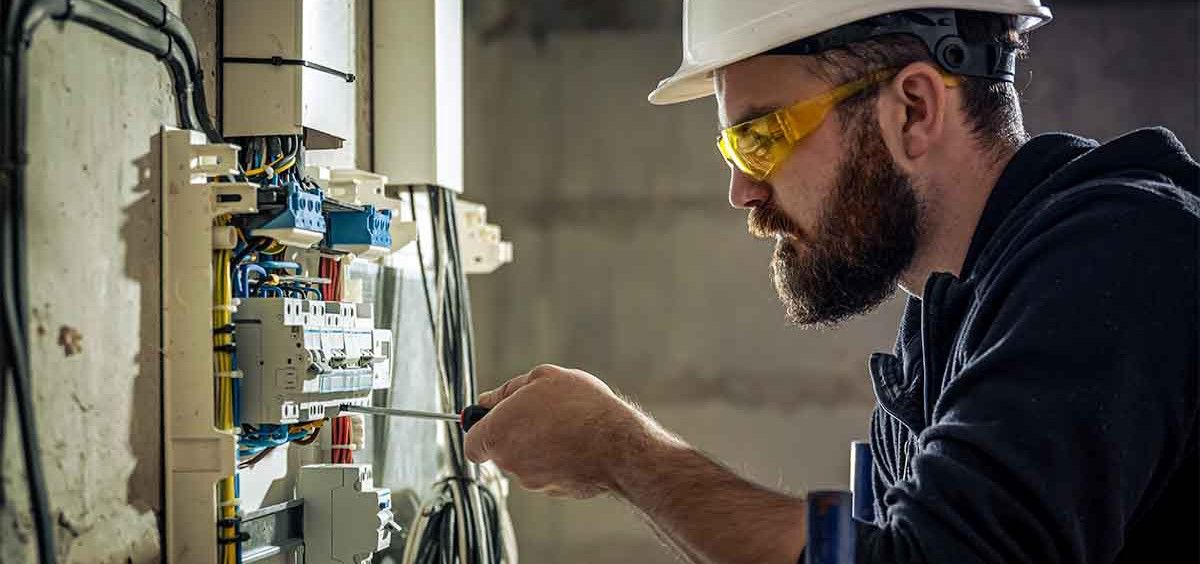Tips for Working Safely Near Electricity
Electrical hazards are listed as the cause of 4,000 injuries annually and while only a small portion of these occur on the job, workplace electrical incidents are often more likely to be fatal, according to the Electrical Safety Foundation International.
Pest management professionals encounter potential electrical hazards while performing many routine services from working in crawlspaces and attics to using ladders to access roofs.
Service technicians and inspectors are protected from electrical hazards by barriers placed between them and wires that carry high voltage through customer’s homes and commercial properties but what happens when this barrier is taken away? How do technicians protect themselves if they cannot see it, smell it, or otherwise know it is there?
Safety Tips
Safety training for working around electricity is crucial to ensure that workers understand the potential hazards associated with electrical systems and equipment. Here are some key components that pest control business owners and managers should include in electrical safety training for technicians and other employees:
Electrical Hazards Awareness - Provide an overview of common electrical hazards, such as electrical shock, arc flash, and arc blast. Explain the potential consequences of electrical accidents, including injuries, burns, and fatalities. Discuss the importance of understanding electrical systems and equipment to recognize potential hazards.
Electrical Safety Practices - Teach workers the proper procedures for working with electricity, including lockout/tagout protocols, etc. Emphasize the importance of following safety protocols and best practices to prevent accidents. Demonstrate safe work practices, such as maintaining a safe distance from live electrical components and using insulated tools.
Ladders are pieces of equipment that need special attention when working around electricity. Technicians should use caution when setting up, climbing, and carrying aluminum ladders near electrical lines or building access points. Play it safe and assume all electrical outlets, wiring, etc. you encounter on the job are “live.”
Personal Protective Equipment (PPE) - Explain the types of PPE required for working around electricity, such as insulated gloves, safety goggles, etc. Describe how to select, inspect, and use PPE properly. Train workers in the importance of wearing the appropriate PPE for specific tasks that require them to perform services close to electrical hazards.
Electrical Equipment and Tools - Educate workers about the proper use, inspection, and maintenance of their own electrical equipment and tools. Discuss the importance of using equipment that is in good working condition and properly grounded. Emphasize the need to inspect cords, plugs, and outlets for damage and replace them if necessary.
Emergency Response - Provide training on how to respond to electrical emergencies, such as electrical shock or electrical fires. If you come across someone being electrocuted and you cannot safely shut off the power, use something nonconductive such as dry wood or plastic to try to separate the person from whatever they are in contact with. Teach workers how to administer first aid for electrical shock and when to call for emergency assistance.
A Simple Electrical Safety Tool
A simple and inexpensive tool to ensure no electricity is present is the use of a non-contact voltage tester. It is shaped like a highlighter and can detect the presence of voltage without risking your life. When placing it near the switch or outlet, a signal such as a flashing light and/or audio tone alerts you to the presence of electricity.
If you get this signal and believe the electricity should be off, stop what you are doing and ask your supervisor for guidance. Never assume the breaker has cut off power and never try to work on a hot circuit. You not only help yourself but could potentially make your customer aware of a dangerous situation.
PestSure – Your Partner in Safety
Founded in 1980, PestSure is the only insurance and risk management provider that is 100 percent dedicated to the pest management industry. It offers industry professionals a full suite of insurance, risk management, and safety training and education offerings.
PestSure provides insurance, safety and risk management consulting to pest management companies representing $2 billion in revenue, $750 million in payroll and more than 16,500 service vehicles. The program is administered by Alliant Insurance Services.
Call 888.984.3813 or visit our contact page for more information.
When you subscribe to the blog, we will send you an e-mail when there are new updates on the site so you wouldn't miss them.



Comments